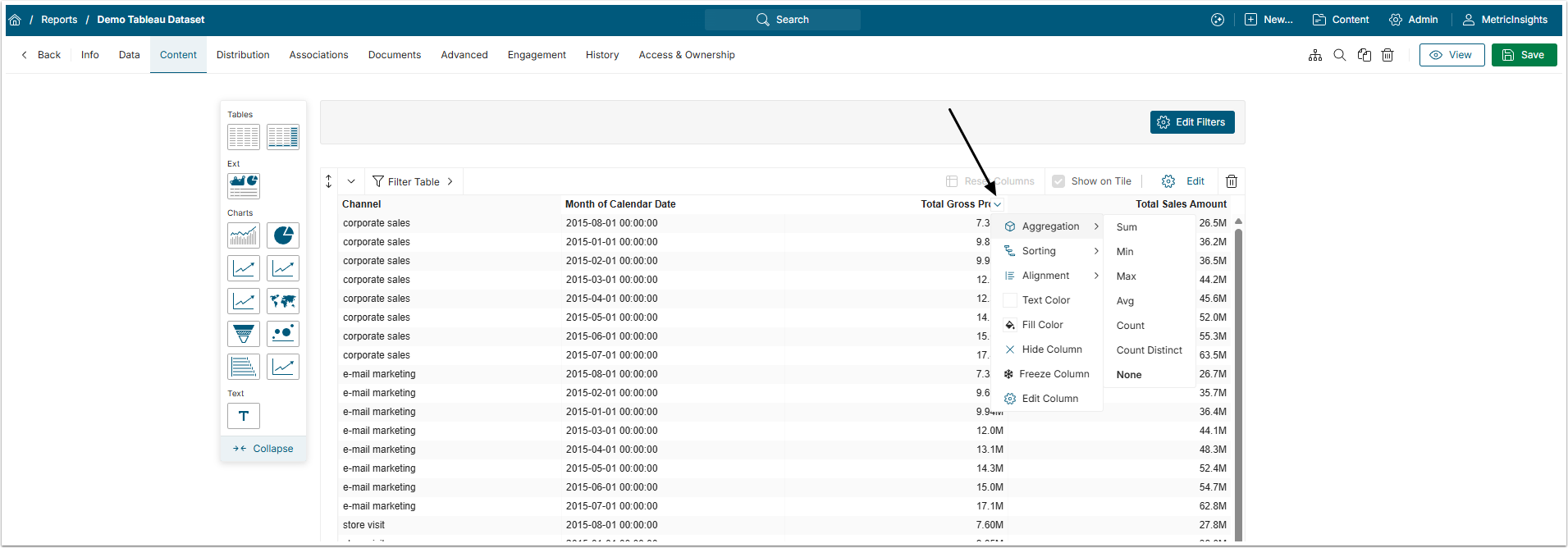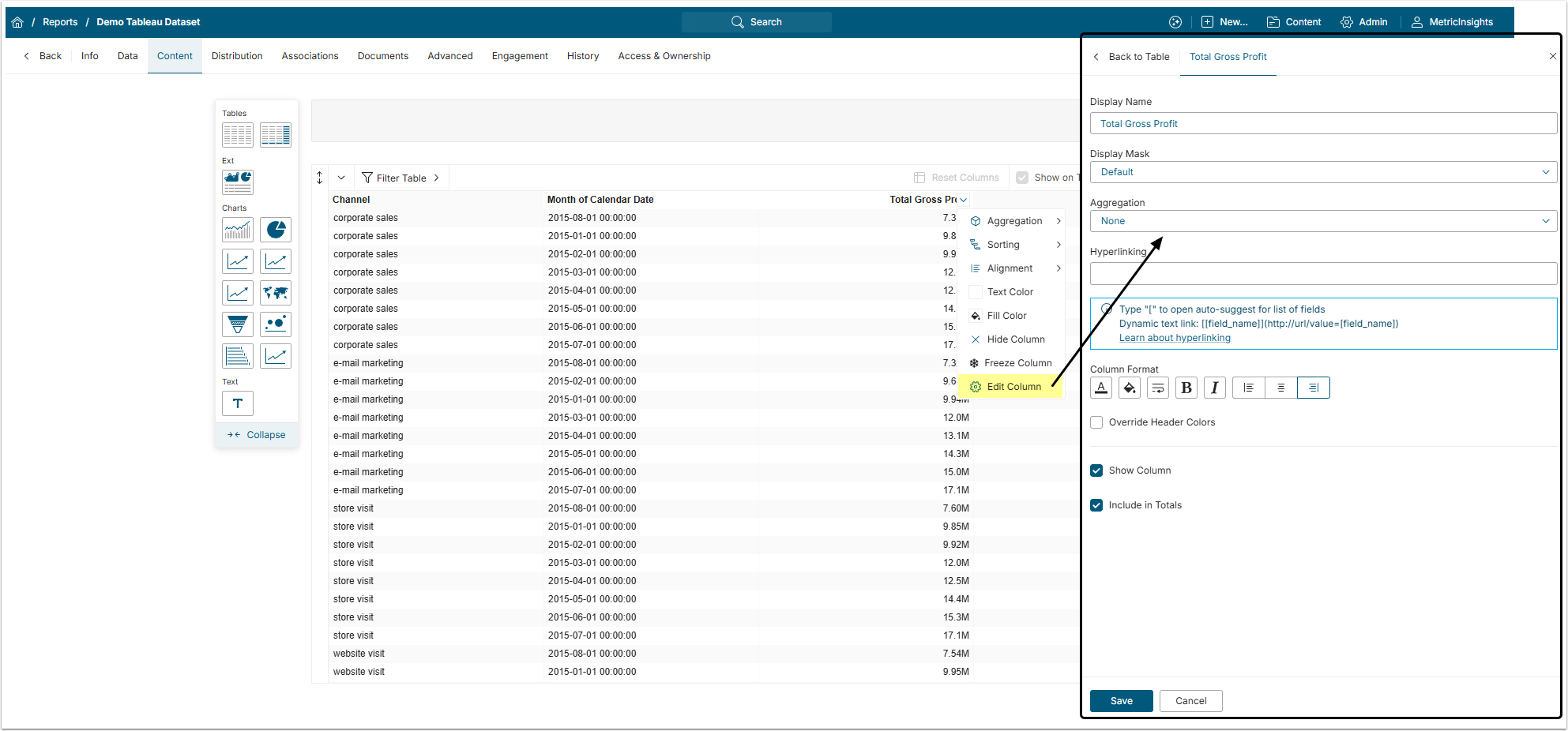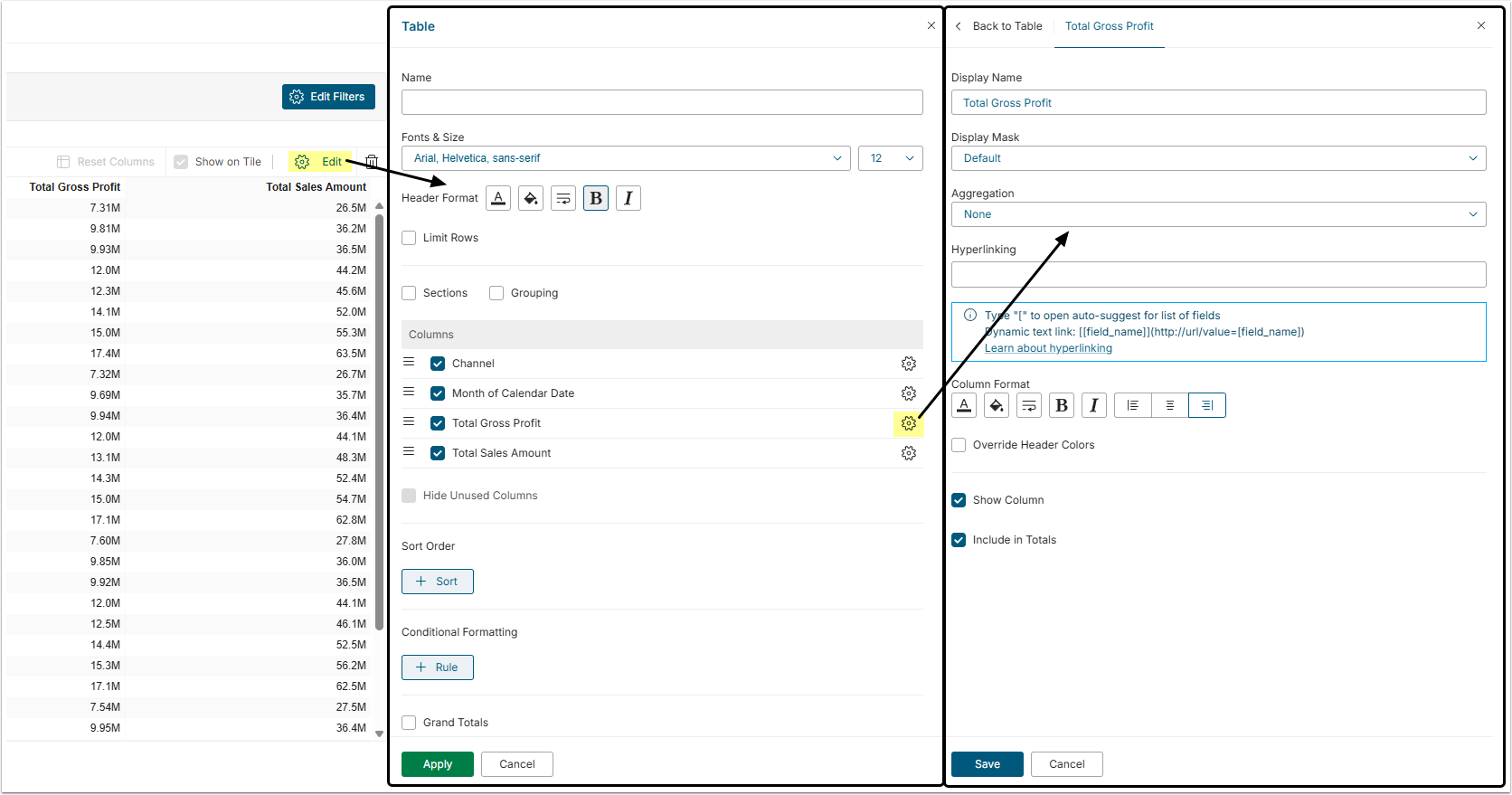Metric Insight has the functionality to aggregate numeric fields directly in the Report without the need to create a new View first. The Report function mimics the ability in the Data Viewer. This article describes how to apply aggregation to the Report.
Aggregation Basics
How to access aggregation options:
- via column drop-downs;
- via the Column Editor;
- via the Table Editor.
How aggregation works:
- Aggregation regardless of type (sum, average, minimum, maximum, etc.) allows displaying unique pairs of values. If you choose to aggregate values based on a particular parameter (country, product category), the aggregation function will produce only ONE resulting value that will be a sum, an average, a minimum, or a maximum value calculated based on all existing values for that parameter.
- When aggregation is applied, matching values in all visible columns will be displayed in sets.
- Since aggregation produces pairs of unique values, sorting will not be applied to the aggregated column.
- Aggregation can be applied to multiple numeric columns.
- Both hidden and displayed columns are included in the aggregation.
Known issue: After aggregation has been applied to any numeric column, sorting can not be applied to any other column.
1. Aggregating via Column Drop-downs
Click the arrow down icon on the numeric values column to open the column drop-down menu and find Aggregation.
2. Aggregating via Column Editor
Click the arrow down icon on the numeric values column to open the column drop-down menu and click Edit Column. Select aggregation type in the Aggregation drop-down menu.


